Abstract
This paper from the Tuberculosis Chemotherapy Centre, Madras, presents the results of a study designed primarily (a) to assess the efficacy of two preparations—Tab. Aneurin. Co. (a vitamin B compound not containing pyridoxine) and glutamic acid—in preventing the development of peripheral neuropathy during high-dosage (12.5-15.2 mg/kg) isoniazid therapy for pulmonary tuberculosis, and (b) to compare the therapeutic efficacy, once isoniazid neuropathy has developed, of Tab. Aneurin. Co., administered at twice the prophylactic dosage, and a vitamin-B-complex preparation containing a small amount of pyridoxine (amounting to 6 mg daily).
Tab. Aneurin. Co. was found to be ineffective in preventing peripheral neuropathy, which occurred in five of the 18 patients receiving this preparation, as compared with six of the 18 who received a placebo, calcium gluconate. Glutamic acid appeared to have some prophylactic effect, since only two of the 19 patients receiving it developed the neuropathy, but the difference between the frequency in the glutamic series and that in the placebo series did not attain statistical significance.
As to the therapeutic efficacy of the two vitamin B preparations, Tab. Aneurin. Co., at twice the prophylactic dosage, did not prevent the progression of the neuropathy in five out of seven patients, whereas improvement occurred in eight of the nine patients who received the vitamin-B-complex preparation containing the small amount of pyridoxine.
This study has confirmed that the frequency of peripheral neuropathy is significantly higher among slow than among rapid inactivators of isoniazid and has indicated that the therapeutic response of the tuberculosis is not materially affected by increasing the dosage of isoniazid from 7.8-9.6 mg/kg (the dosage used in a previous study) to 12.5-15.2 mg/kg.
Full text
PDF
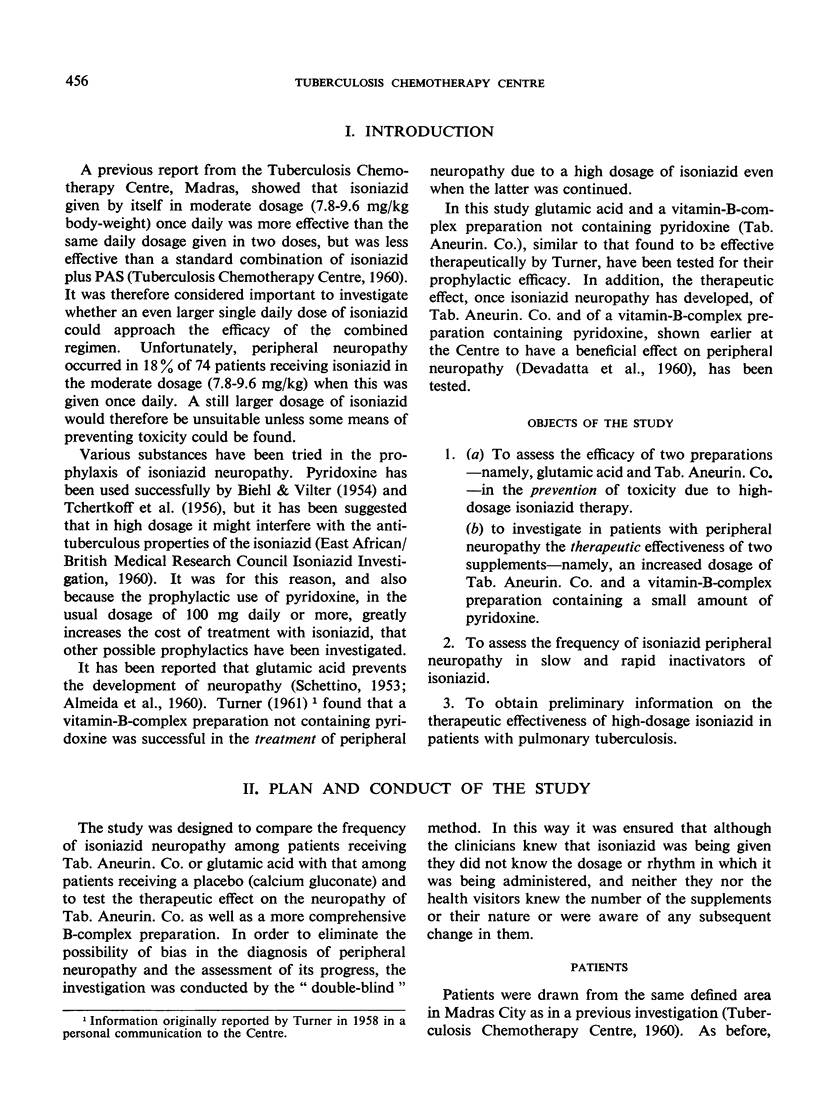




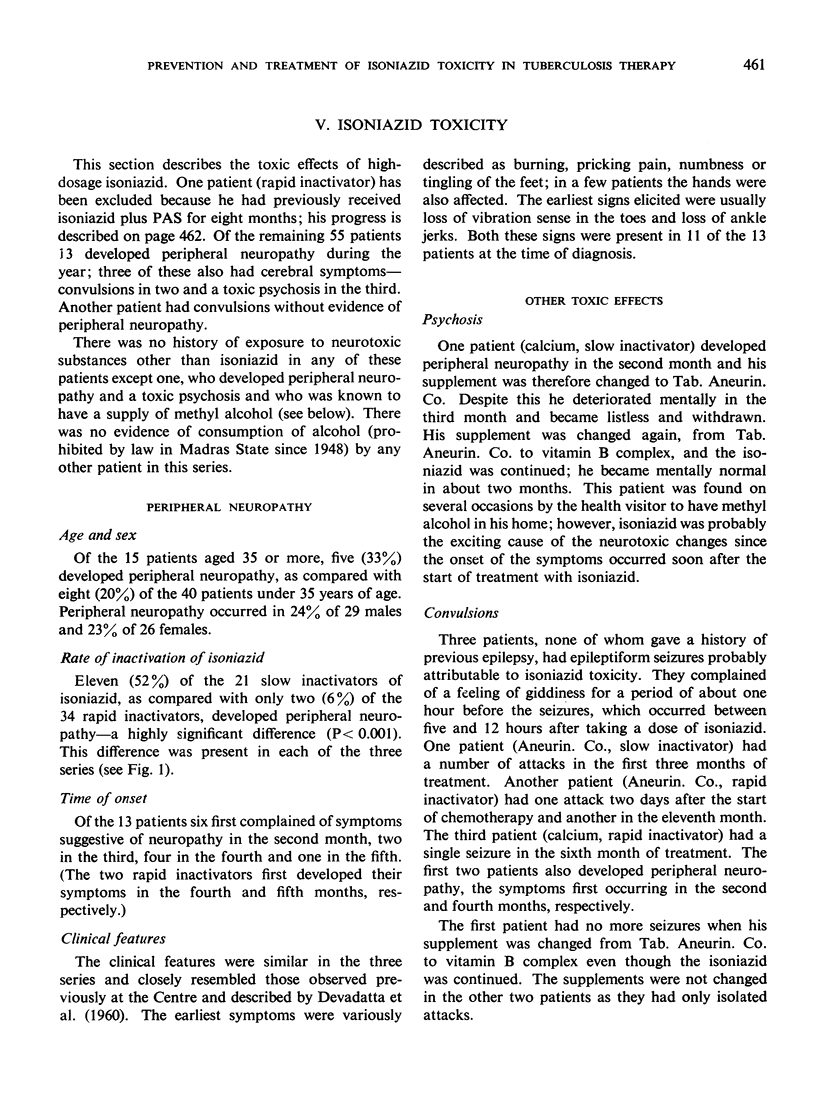

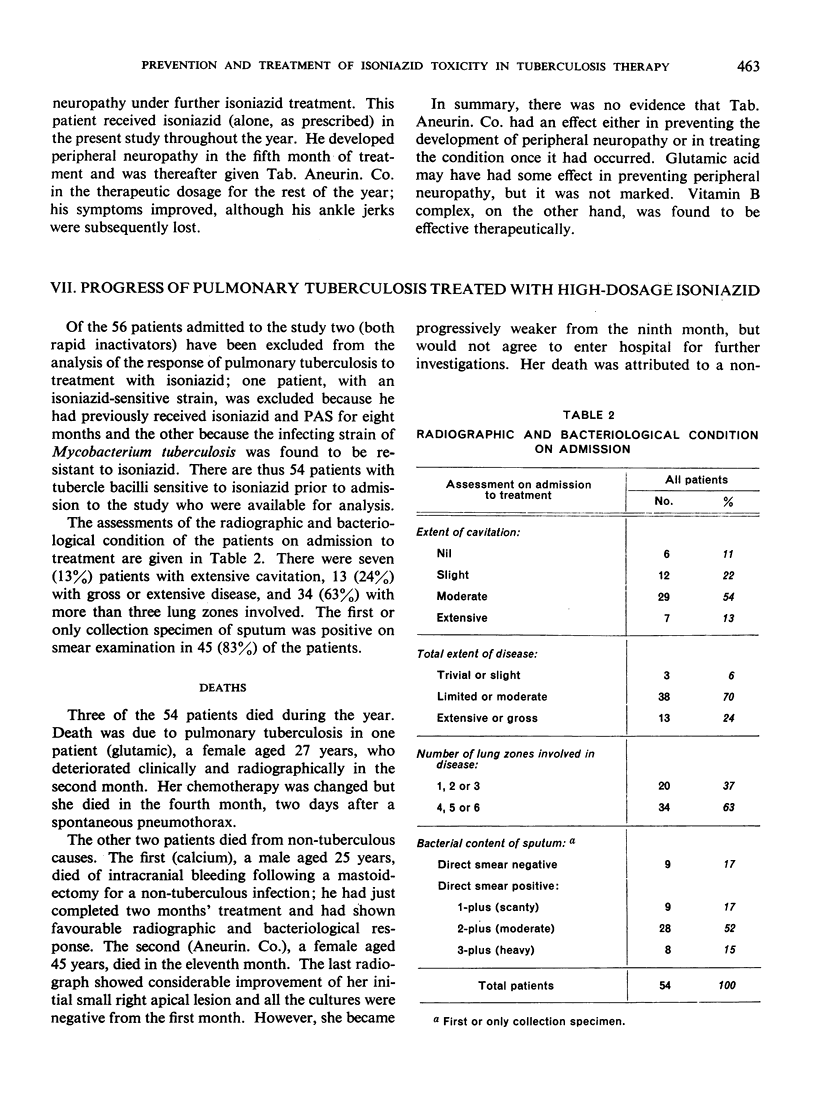

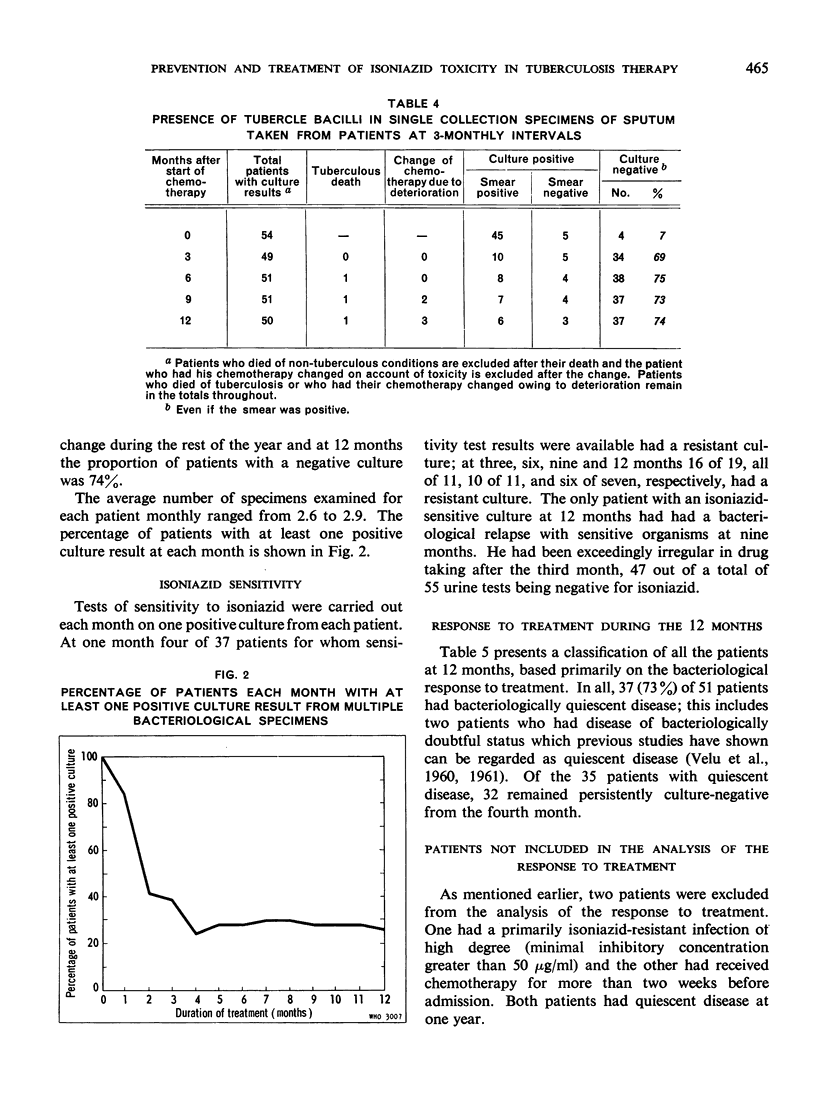






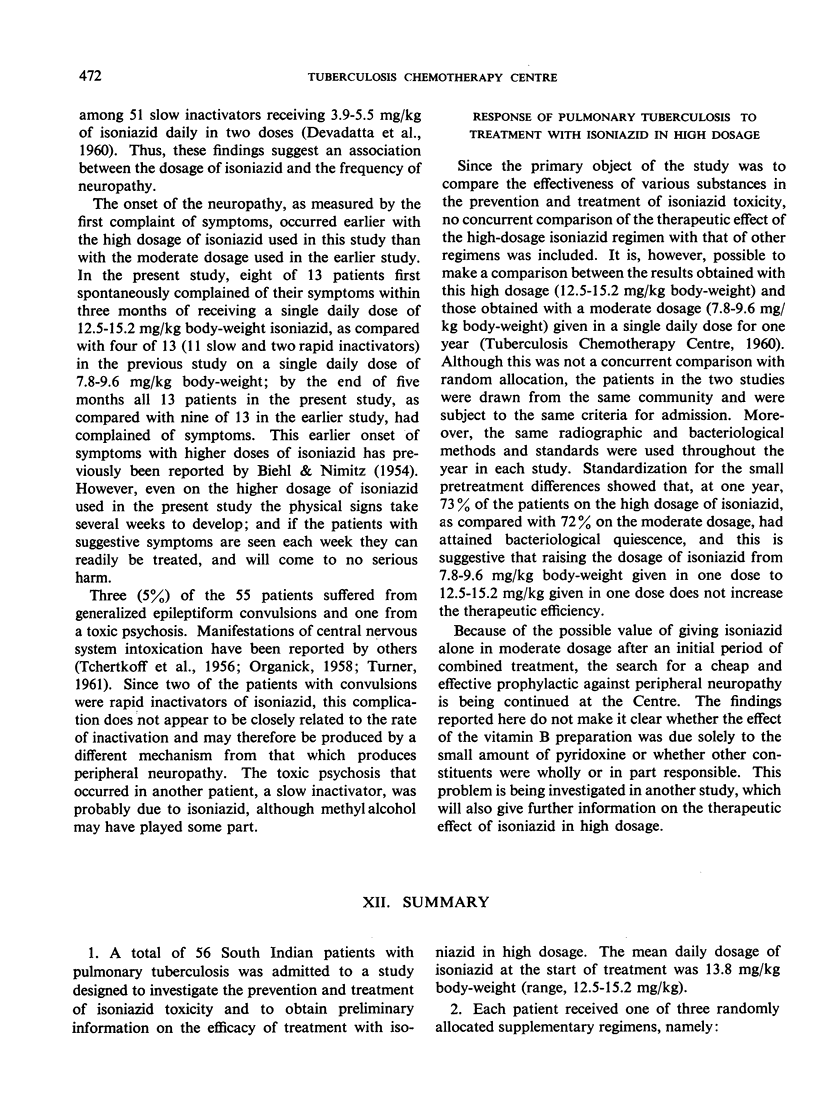



Selected References
These references are in PubMed. This may not be the complete list of references from this article.
- ADAMSON C., IKARD S., TCHERTKOFF I., YILMAZ R. Large dose isoniazid regimen for pulmonary tuberculosis; effect of glutamic acid; management of drug toxicity with pyridoxine. Sea View Hosp Bull. 1956 Jul;16(2):62–79. [PubMed] [Google Scholar]
- BIEHL J. P., NIMITZ H. J. Studies on the use of high dose of isoniazid. I. Toxicity studies. Am Rev Tuberc. 1954 Sep;70(3):430–441. doi: 10.1164/art.1954.70.3.430. [DOI] [PubMed] [Google Scholar]
- BIEHL J. P., VILTER R. W. Effect of isoniazid on vitamin B6 metabolism; its possible significance in producing isoniazid neuritis. Proc Soc Exp Biol Med. 1954 Mar;85(3):389–392. doi: 10.3181/00379727-85-20891. [DOI] [PubMed] [Google Scholar]
- DEVADATTA S., GANGADHARAM P. R., ANDREWS R. H., FOX W., RAMAKRISHNAN C. V., SELKON J. B., VELU S. Peripheral neuritis due to isoniazid. Bull World Health Organ. 1960;23:587–598. [PMC free article] [PubMed] [Google Scholar]
- GANGADHARAM P. R., BHATIA A. L., RADHAKRISHNA S., SELKON J. B. Rate of inactivation of isoniazid in South Indian patients with pulmonary tuberculosis. Bull World Health Organ. 1961;25:765–777. [PMC free article] [PubMed] [Google Scholar]
- GANGADHARAM P. R., MITCHISON D. A., SUBBAIAH T. V., SHORT E. I. [The detection of isoniazid in urine]. Tubercle. 1958 Aug;39(4):191–200. doi: 10.1016/s0041-3879(58)80067-7. [DOI] [PubMed] [Google Scholar]
- McCUNE R., DEUSCHLE K., McDERMOTT W. The delayed appearance of isoniazid antagonism by pyridoxine in vivo. Am Rev Tuberc. 1957 Dec;76(6):1100–1105. doi: 10.1164/artpd.1957.76.6.1100. [DOI] [PubMed] [Google Scholar]
- ORGANICK A. B. Toxic psychosis due to isoniazid; report of three cases with studies of patterns of isoniazid inactivation in the serum. Am Rev Tuberc. 1959 Jun;79(6):799–804. doi: 10.1164/artpd.1959.79.6.799. [DOI] [PubMed] [Google Scholar]
- SCHETTINO S. Ricerche cliniche nel trattamento della tubercolosi con un nuovo preparato di idrazide isonicotinica; la glutizina. Boll Soc Ital Biol Sper. 1953 Jan;29(1):41–43. [PubMed] [Google Scholar]
- SELKON J. B., FOX W., GANGADHARAM P. R., RAMACHANDRAN K., RAMAKRISHNAN C. V., VELU S. Rate of inactivation of isoniazid in South Indian patients with pulmonary tuberculosis. 2. Clinical implications in the treatment of pulmonary tuberculosis with isoniazid either alone or in combination with PAS. Bull World Health Organ. 1961;25:779–792. [PMC free article] [PubMed] [Google Scholar]
- VELU S., ANDREWS R. H., ANGEL J. H., DEVADATTA S., FOX W., GANGADHARAM P. R., NARAYANA A. S., RAMAKRISHNAN C. V., SELKON J. B., SOMASUNDARAM P. R. Progress in the second year of patients with quiescent pulmonary tuberculosis after a year of domiciliary chemotherapy, and influence of further chemotherapy on the relapse rate. Bull World Health Organ. 1961;25:409–429. [PMC free article] [PubMed] [Google Scholar]
- VELU S., ANDREWS R. H., DEVADATTA S., FOX W., RADHAKRISHNA S., RAMAKRISHNAN C. V., SELKON J. B., SOMASUNDARAM P. R., SUBBAIAH T. V. Progress in the second year of patients with quiescent pulmonary tuberculosis after a year of chemotherapy at home or in sanatorium, and influence of further chemotherapy on the relapse rate. Bull World Health Organ. 1960;23:511–533. [PMC free article] [PubMed] [Google Scholar]
- das ALMEIDA F. N., de CAMPOS L., RODRIGUES F. C., de OLIVEIRA G., ABRANCHES A. J., MARTINS M. A., VASCONCELOS M. Reduction of toxicity of the high doses of isoniazid by its association with glutamic acid. Acta Tuberc Scand. 1960;38:168–177. [PubMed] [Google Scholar]


